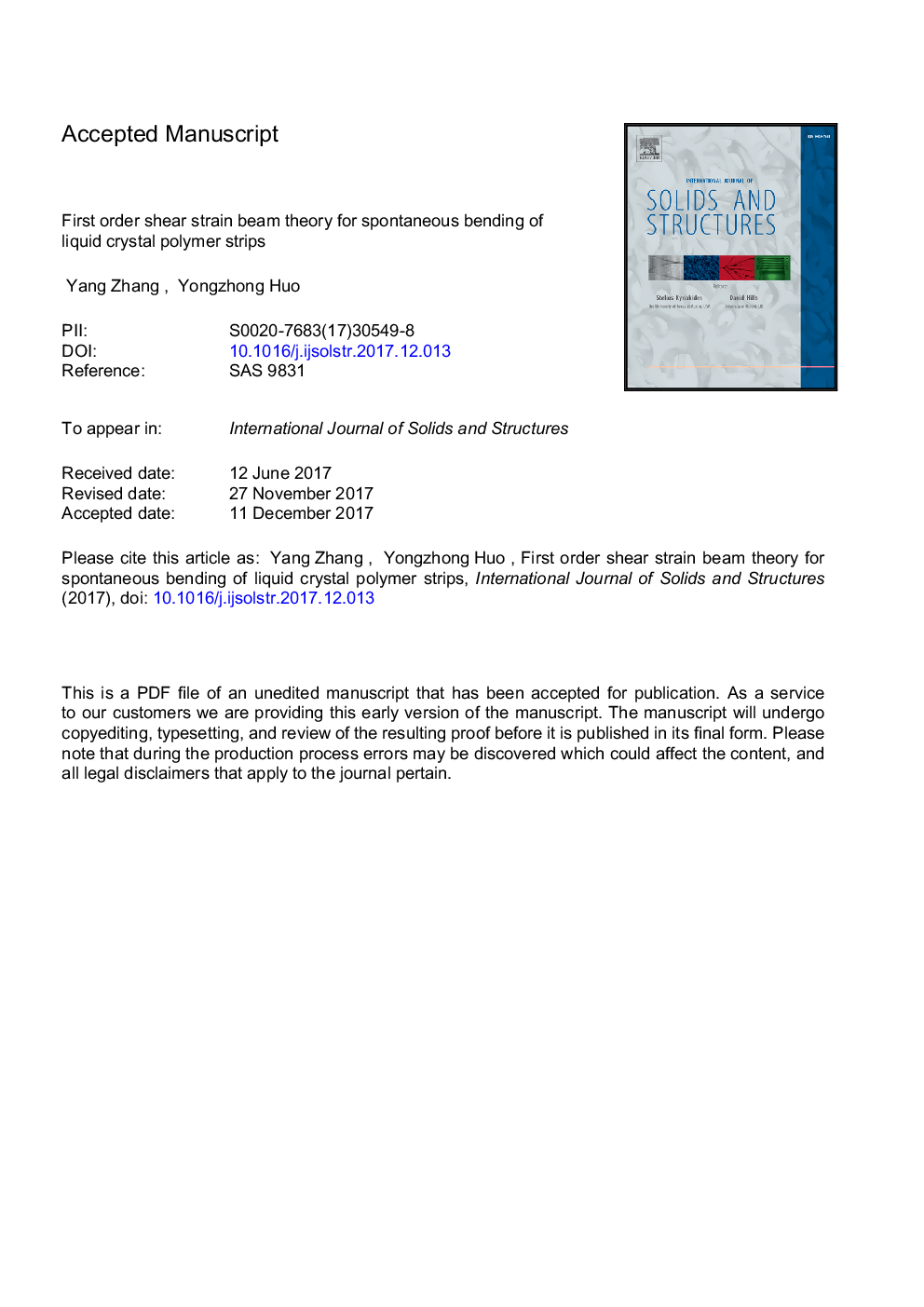ترجمه فارسی عنوان مقاله
تئوری پرتو باربری برش اول برای خم شدن خود به خود از نوارهای پلیمر کریستال مایع
عنوان انگلیسی
First order shear strain beam theory for spontaneous bending of liquid crystal polymer strips
| کد مقاله | سال انتشار | تعداد صفحات مقاله انگلیسی |
|---|---|---|
| 137458 | 2018 | 47 صفحه PDF |
منبع

Publisher : Elsevier - Science Direct (الزویر - ساینس دایرکت)
Journal : International Journal of Solids and Structures, Volumes 136â137, April 2018, Pages 168-185
ترجمه کلمات کلیدی
مدل خمش پرتو، خم شدن خود به خودی، برش خودبخودی متقاطع، پلیمرهای کریستال مایع، بهینه سازی و طراحی،
کلمات کلیدی انگلیسی
Beam bending model; Spontaneous bending; Transversal spontaneous shear; Liquid crystal polymers; Optimization and design;

